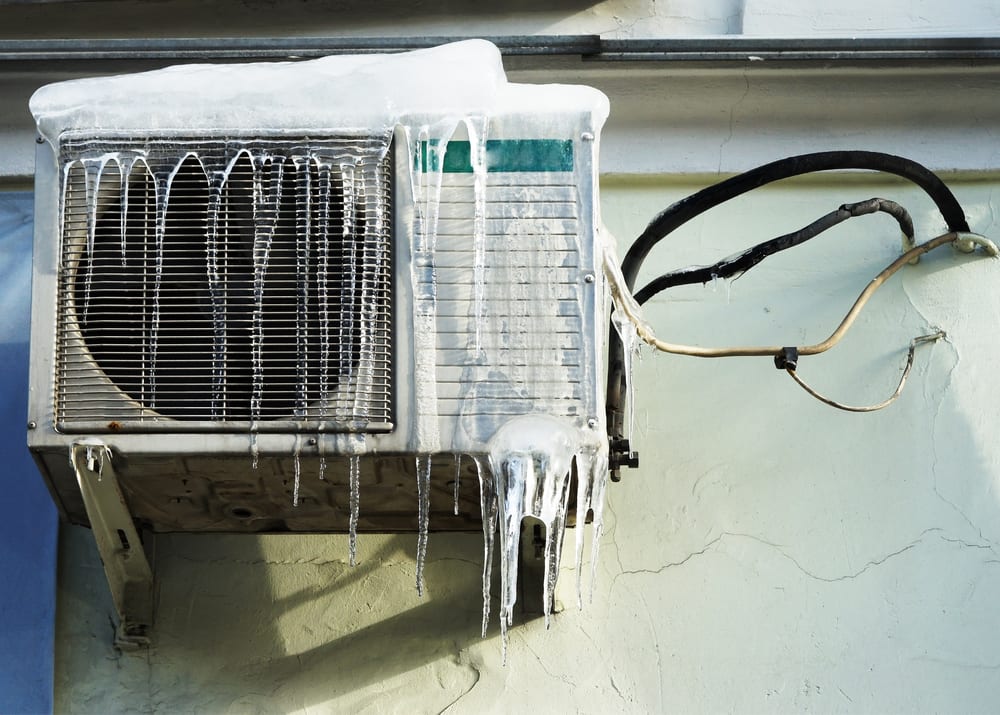Troubleshooting a Frozen AC Pipe - Effective Solutions for Home Cooling Systems
Troubleshooting a Frozen AC Pipe - Effective Solutions for Home Cooling Systems
Blog Article
The publisher is making several great observations on the subject of What Do I Do If My AC Pipe Is Frozen as a whole in this great article followed below.

Intro
Finding that your air conditioning pipeline is iced up can be concerning, especially throughout hot summer season when you rely on your air conditioning system the most. Understanding what to do in such a circumstance is crucial to avoid further damage to your cooling system and ensure your convenience inside your home.
Comprehending the Causes
Numerous factors can contribute to the cold of an a/c pipe. Recognizing these reasons can aid you deal with the problem efficiently.
Absence of Airflow
One common cause of an icy AC pipeline is inadequate air movement. When the airflow over the evaporator coil is limited, it can trigger the coil to drop below freezing temperature level, resulting in ice development on the pipeline.
Reduced Refrigerant Levels
Not enough refrigerant levels in your air conditioning system can also result in a frozen pipeline. Low cooling agent degrees can cause the stress in the system to drop, causing the cold of wetness on the evaporator coil.
Cold Weather Conditions
In colder climates, freezing temperature levels outside can add to the freezing of a/c pipes. If your AC system is not correctly shielded or if there are leaks in the ductwork, cool air can penetrate the system, triggering the pipeline to ice up.
Dirty Air Filters
Filthy or stopped up air filters can limit air movement in your air conditioner system, leading to different problems, including a frozen pipeline. It's necessary to change or clean your air filterings system on a regular basis to make certain correct airflow and avoid ice accumulation.
Signs of a Frozen AC Pipe
Identifying the indicators of an icy air conditioning pipe is vital for punctual action.
Lowered Airflow
If you see a significant decline in air movement from your vents, it can indicate a frozen pipe.
Ice Buildup on the Pipe
Noticeable ice buildup on the cooling agent line or the evaporator coil is a clear sign of a frozen air conditioning pipe.
Strange Sounds from the Unit
Uncommon noises, such as hissing or bubbling, coming from your air conditioner system can signal that there's ice existing on the pipe.
Immediate Actions to Take
When faced with a frozen air conditioning pipe, it's vital to act rapidly to avoid further damages to your air conditioning system.
Shutting off the a/c
The first step is to switch off your air conditioning unit to stop the system from running and aggravating the issue.
Looking for Blockages
Examine the area around the interior unit for any kind of blockages that might be blocking air flow, such as furnishings or curtains.
Thawing the Pipe
You can use gentle methods like placing towels soaked in cozy water around the frozen pipe to assist thaw it gradually.
Preventive Measures
Taking preventive measures can aid avoid future incidents of a frozen AC pipe.
Normal Maintenance Checks
Set up routine upkeep checks with a professional HVAC professional to make certain that your AC system is running efficiently.
Changing Air Filters
Regularly replace or cleanse your air filters to prevent airflow limitations and maintain ideal efficiency.
Protecting Exposed Pipes
If your AC pipelines are subjected to cool temperature levels, take into consideration insulating them to avoid cold throughout winter months.
Seeking Professional Help
If DIY approaches fall short to settle the problem or if you're uncertain concerning just how to continue, it's ideal to look for assistance from a qualified HVAC service technician.
When DIY Methods Fail
If your efforts to thaw the pipe or address other problems are not successful, it's time to hire a professional.
Significance of Hiring a Professional HVAC Technician
A qualified HVAC technician has the experience and devices essential to diagnose and repair problems with your air conditioner system safely and properly.
Verdict
Dealing with an icy air conditioner pipeline can be an aggravating experience, yet understanding just how to respond can assist decrease damages and bring back comfort to your home. By recognizing the causes, identifying the indications, and taking prompt action, you can effectively attend to the concern and protect against future occurrences.
Frozen AC Line: Why It Happens & What To Do About It
A frozen AC line can be a rather peculiar sight in a place like Phoenix, Arizona where nothing ever freezes. In this post, we’ll discuss what makes an air conditioner line frozen – and what you can do about it.
Dirty Air Filters
Did you know that you should be cleaning or replacing your air filters on a monthly basis? Failing to do this can result in airflow issues that, in turn, cause your evaporator coils and lines to freeze over. You’ll notice a buildup of ice on both components, although the buildup on your pipes will, of course, be more evident unless you open your air condition up to reveal the coils.
What To Do About It
Give your air filter a good cleaning if it’s reusable. If not, replace the filter outright. Next, switch your air conditioner’s fan setting on and leave it there for 2-3 hours. This will draw warm air in, helping to thaw your evaporator coil. You can also check out this article for some tips on cleaning the coils themselves if you’d like to speed the process up. Before you switch the unit back to its normal state, make sure the supply vents are completely unobstructed and free of dust or other debris.
If you keep having this issue even after replacing your filters regularly, contact a local HVAC repair company and have them inspect your evaporator coil, ductwork, and any other components that may be at fault. If you live in the Phoenix, Arizona area, give American Home Water and Air a call.
Low Refrigerant Levels/Leakage
What To Do About It
Contrary to what air conditioner “recharge” companies often tell their clients about refrigerant, it should never need to be simply refilled. You see, refrigerant runs in what experts refer to as a “closed loop.” Refrigerant really shouldn’t be leaving that loop. If it is, you’ve got a leak.
Paying someone to come and pump more refrigerant into your system (aka “recharge” it) isn’t the solution. Doing that will simply kick the can down the road. Besides, refrigerant leaks can be harmful to the environment and people in your home.
Rather, you need to take care of the leak with the help of a technician. Check out this article for some more information about dealing with air conditioners that are leaking refrigerant. Before you contact a technician, switch your thermostat to the off position. Then, switch the fan setting on and let it run for 2-3 hours so the unit can thaw.
Improper Temperature Setting
Improper temperature settings can also cause a drop in your air conditioner’s pressure. What many people don’t realize is that air conditioners are actually designed to run when temperatures have fallen above roughly 60 degrees Fahrenheit. If you run the unit when it’s cold outside, you’ll run into many issues, including frozen components.

Hopefully you enjoyed reading our piece on What Do I Do If My AC Pipe Is Frozen. Many thanks for spending some time to read through our piece. If you please take the time to share this post if you appreciated it. We cherish reading our article about Have a Frozen AC Line? Here’s How to Fix It.
Click Here! Report this page